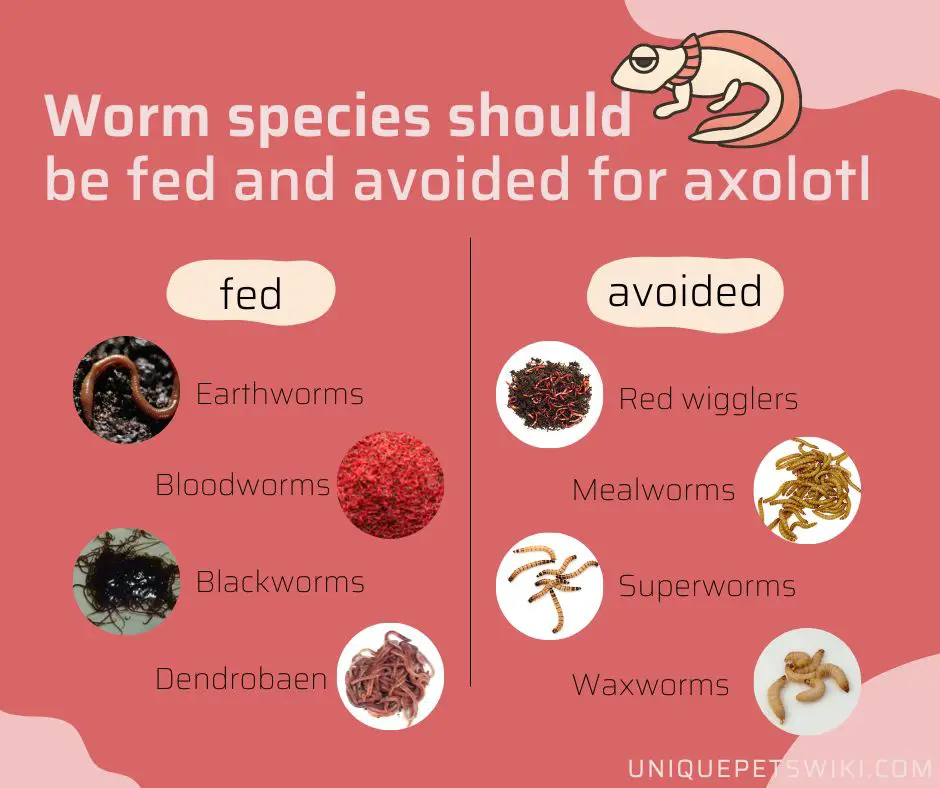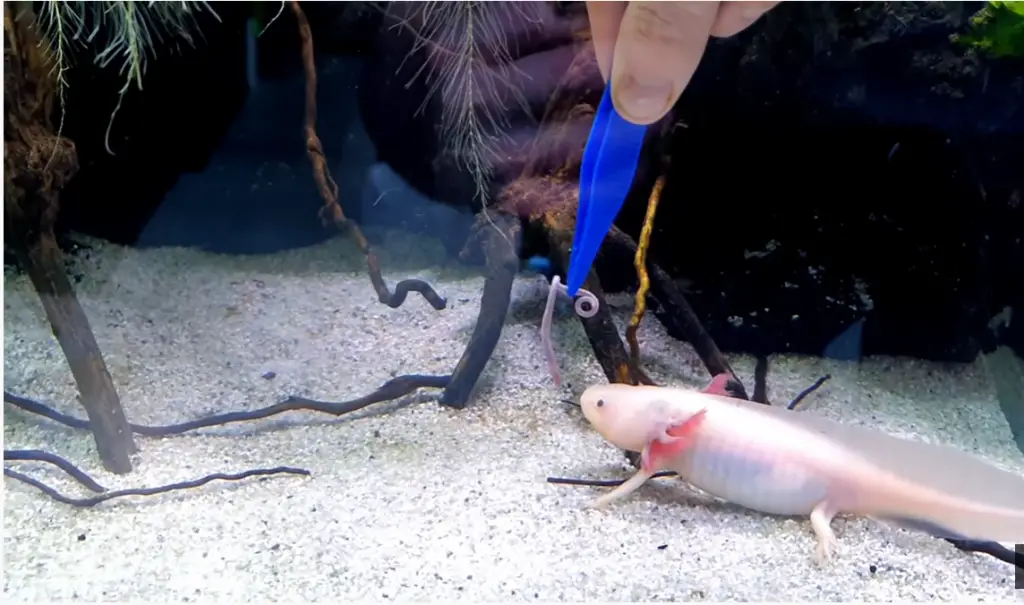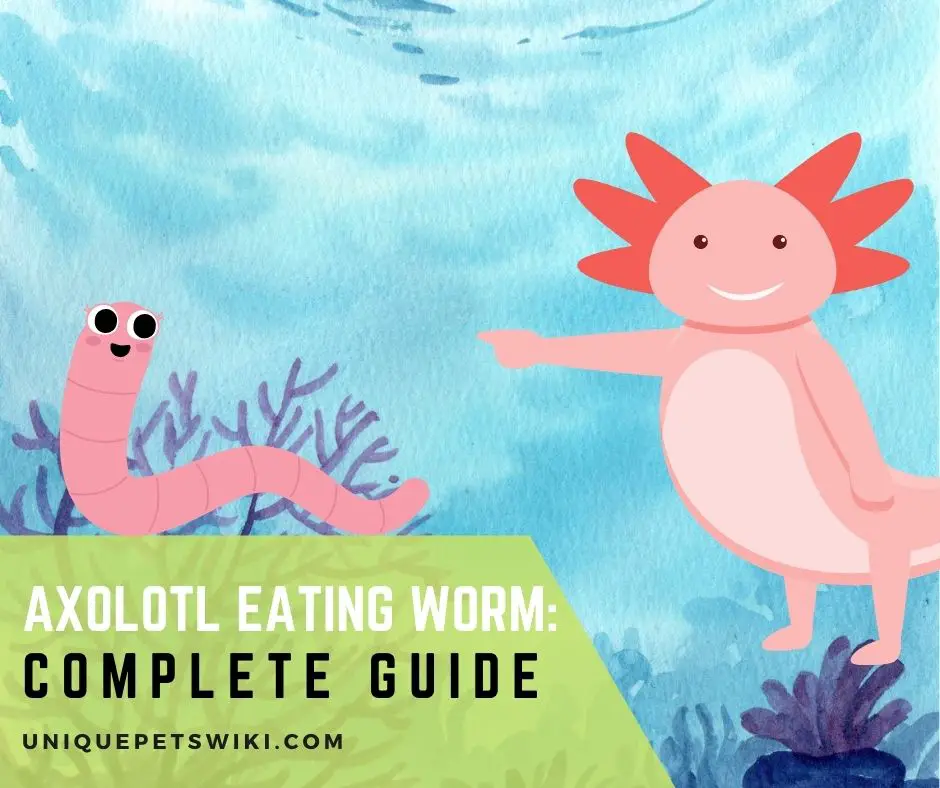Understanding what these amphibians are required to eat is one of the secrets to successfully keeping an axolotl as a pet. Because this can change throughout your axolotl’s life, it’s a good idea to start learning about worms and more details as soon as you bring your axolotl home.
As an axolotl owner, you are required to know what type of worms to feed your Axolotl and how to feed worms to your Axolotl. It might be an overwhelming task, especially for first-time owners.
This page will provide you with information about Axolotl and worms, including the benefits, a step-by-step guide process, some relevant data, and much more!
Contents
Benefits of Axolotl Eating Worm
Worms are one of the most effective ways to stimulate proper gill filament growth for axolotls. They are also less messy than other sorts of cuisine. And, of course, they are quite nutritious.
Furthermore, one of the advantages of feeding worms is that it is inexpensive and simple to set up.
Earthworms, bloodworms, blackworms, and Dendrobaena are some of the best worms to feed your pet. Certain worms should not be offered as axolotl food for safety reasons. Red wigglers, mealworms, superworms, and waxworms are all examples of these worms.
Red wrigglers secrete a sticky substance known as “coelomic fluid,” which can taste disgusting to axolotls. If forced, your axolotls will grow accustomed to it. However, expect a lot of vomiting at first, and your axolotl may refuse to eat it.
Chitin is the exoskeleton of mealworms, superworms, and waxworms. Axolotls are unable to digest chitin, and the exoskeleton can become lodged in their gills, causing choking or asphyxia. When feeding axolotls, it is advisable to avoid all chitinous worms.
If you want to learn check out our article: What can axolotl eat?

How Do You Feed Axolotl Worms?
When feeding them, keep in mind that their teeth are not designed for crushing or biting. They have very weak teeth, which is why they must devour their food whole.
They use a powerful vacuum force to suction the food into its mouth. While inhaling, it will draw some small pebbles into its stomach, which will aid in the grinding of food.
There are several ways to give your Axolotl your preferred worms. You can either feed them worms with tweezers or place the worms in the feeding dish.
You may also feed them by hand, but don’t worry, if your Axoltol bites you, it won’t harm you because they have little stomps for teeth.
When Axolotl Is Baby
At this point, feeding your axies a bloodworm-heavy diet may be the best option. To maintain their growth, you, as the owner, must feed them on a daily basis. Give them as many worms as your axolotl can eat in two minutes.
When All Four Legs Have Formed
Once all four legs have formed, you can begin weaning it off of to live earthworms, little by little. Go purchase small worms and chop them into extremely small pieces, no longer than 1cm in length.
Feed them the worms twice a day. The length of the worm provided to the Axolotls can be gradually increased until they can consume a full worm.

By the Age of 6 Months
The ability to ingest two worms at the same time should be acquired by them when they reach six months of age.
From the perspective of a breeder, the best size of worm you can buy right now is mixed size. However, because the worms will be sliced into bite-sized pieces, the number of worms you buy will last longer, allowing you to save money.
By The Age of 8 Months
You may start feeding them the full-sized worm from the mixed pack once they’re 8 months old, and they’ll gladly eat 2 or 3 good-sized worms every day at this point. Nevertheless, keep in mind that just because they eat something doesn’t mean they want to eat it again later.
At this time, the worms do not need to be chopped. As long as your axolotl consumes two worms a day, everything will go smoothly.
Adult Axolotls (Two Years Old or Older)
As they grow older, they will be able to swallow enormous worms on their own. Upon reaching the age of two years or more, you can upgrade your pet Axolotl to a bigger type of worms. You can reduce the frequency of feedings by giving them a worm three times a week.
KNIPEX Tools – Plastic Tweezers
- Plastic Gripping Tweezers-Blunt Tips-ESD
- Plastic Gripping Tweezers-Blunt Tips-ESD
- Plastic Gripping Tweezers-Blunt Tips-ESD
- Plastic Gripping Tweezers-Blunt Tips-ESD
- Plastic Gripping Tweezers-Blunt Tips-ESD
Last update on 2022-12-29 / Affiliate links / Images from Amazon Product Advertising API
How Long Can You Leave Worms In Your Axolotl Tank?
If the worm is alive, you may leave it until the axolotls consume it. If the food is dead, it should be removed immediately. We recommend leaving it in the water for no longer than 15 minutes after feeding.
If the axolotl does not consume it within these 15 minutes, remove the worms and all their contents immediately, and then inspect the tank for any remaining worms. Axolotls are excellent at creating havoc – do not underestimate their powers in this area.
Conclusion
As you can see, worms are an easy source of sustenance for an axolotl. There is hardly much to consider. All you need to do is purchase a batch of worms and feed them to your Axolotl.
Additionally, they are nutritious, as their protein content is optimal for your carnivorous pet. However, not all of them are suitable for axolotl consumption. Certain worms with tough exoskeletons and low nutritional content can be harmful to them.
When you have a solid understanding of what your axolotl should be eating at each life stage, as well as how many worms to offer per meal, you will feel a lot more secure in your ability to care for your axolotl.

